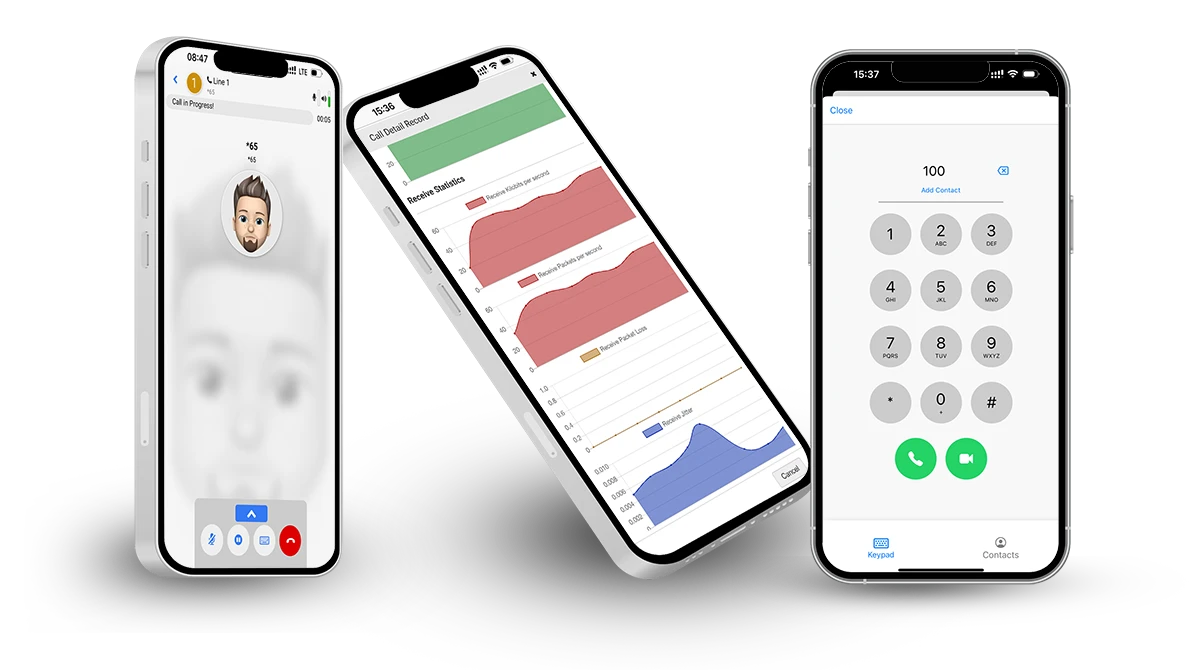SIPERB provides robust WebRTC client formats to meet diverse communication needs across various devices. Our solutions include clients tailored for web, tablet, and mobile interfaces, each designed to optimize your communication experience regardless of your device type. This article details the features of each WebRTC client format offered by SIPERB, helping you choose the right platform for your needs.
WebRTC Client Formats
SIPERB offers three distinct WebRTC client formats: Web, Tablet, and Mobile. Each format is engineered to provide seamless communication experiences with features suited to the specific device type.
1. Web Client
The Web client is designed to operate directly within your browser, offering a hassle-free setup without the need for additional software installations. It is accessible through a simple browser extension, making it incredibly convenient for users who prefer desktop communications.
- Compatibility: The Web client works effectively across all major browsers including Safari, Firefox, and Chrome on various operating systems such as macOS, Windows, and Linux.
- Installation: You can enhance the Web client’s functionality by installing it as a Progressive Web App (PWA), which allows it to run as a standalone application on your Mac, Windows or Linux desktop.
- Experience: While the Web format is fully responsive and functions well on tablets, it offers the most optimized experience on desktop environments.

Available by simply navigating to https://www.siperb.co/phone/
2. Tablet Client
Although the Web client is compatible with tablet devices, SIPERB recommends using the dedicated Mobile client on tablets for a better user experience. The Mobile client is optimized to take full advantage of the tablet’s capabilities, such as touch interactions and orientation changes.
- Optimization: The Mobile client on tablets provides an enhanced interface that is specifically designed for the larger screen size, improving usability and accessibility.
- Features: Supports push notifications and other tablet-specific functionalities, enhancing the communication experience.
3. Mobile Client
The Mobile client is available for download from the Google Play Store and the Apple App Store. This client is specially designed for smartphones, providing a rich, intuitive user experience that leverages the native capabilities of mobile devices.
- Push Notifications: One of the key advantages of the Mobile client is the ability to receive push notifications, which keep you informed of incoming calls and messages even when the app is not actively running.
- Integration: The Mobile client integrates seamlessly with your device’s native features, such as contacts and call management, making it a superior choice for users on the go.

Available from Android Play Store and Apple App Store
Choosing the Right Client
- Device Type: Choose the client based on the device you use most frequently for communications. Desktop users may prefer the Web client, while tablet and smartphone users might find the Mobile client more advantageous.
- Functionality Needs: Consider what functionalities are most important for your daily communication needs, such as push notifications or the ability to integrate with the device’s native features.
Conclusion
SIPERB’s diverse range of WebRTC clients ensures that you can maintain effective communication across any device, enhancing your productivity and connectivity. By selecting the appropriate client format for your device and needs, you can leverage the full power of WebRTC technology integrated seamlessly into your everyday communication tools.
